OUR DAYS are dense with experiences…
Today we’re on location at a local gem dealer’s office in Voi, Kenya! It’s an exciting day, to say the least. Not only are we on set, we’re in front of the camera for the Sharing the Rough jewelry documentary!

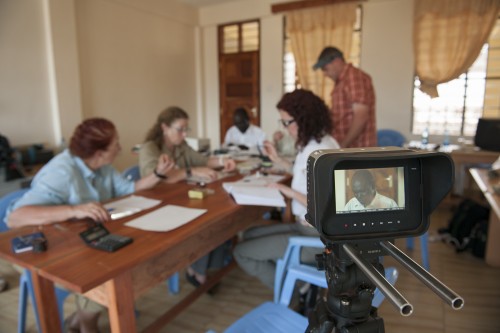
The camera was rolling for Sharing the Rough! Photo Courtesy of Ernest Rodriguez Photography. |
The filming process is fascinating. One thing I learned pretty quickly while traveling with a film crew is that about 90% of the time is spent in set up…and then you wait. Hundreds of pounds of technical gear are ferried from the overland vehicles we’re traveling in to the location where they are shooting. Then the cinematographer, Michael, the sound engineer, Max, and the producer, Jon, work to set up the shot(s) with the director, Orin Mazzoni. With his laser-like focus, Orin has a vision and knows how he wants the scenes framed up.
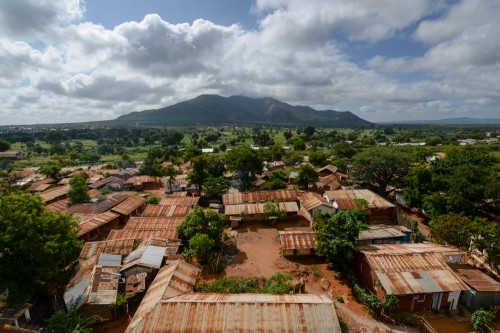
Metal rooftops in the shadow of the mountain dominating the Voi landscape. Photo courtesy of Ernest Rodriguez Photography. |
Advertisement
We are at a local gem dealer’s office in the town near where we are staying. Originally founded about eighty years ago, Voi has burgeoned from around fifteen hundred people to a population of about 17,000 in recent years. Just imagine the resulting infrastructure issues. Actually, if you’re from the US and haven’t traveled to this area, you’d have to see it to really believe it!

A street scene in Voi, Kenya. Photo courtesy of Ernest Rodriguez Photography.
|
The office is in a relatively new building, which is VERY nice by African standards (a big plus in my opinion was that it had bathrooms. If you read my BYOTP article, you know by now that bathrooms–particularly CLEAN bathrooms–are a rarity here). In a several hundred square foot space, five of us, along with the gem dealer, sat down at tables and looked at rough gemstones. In front of the camera, which was rolling!
We are at a local gem dealer’s office in the town near where we are staying. Originally founded about eighty years ago, Voi has burgeoned from around fifteen hundred people to a population of about 17,000 in recent years. Just imagine the resulting infrastructure issues. Actually, if you’re from the US and haven’t traveled to this area, you’d have to see it to really believe it!

Our view from the gem dealer’s office. Photo courtesy of Ernest Rodriguez Photography.
|
I have looked at countless colored gems in my career in jewelry. Let’s just say that I learned more in a few hours than I could have learned in a couple of years at home. The gems, singly or in parcels (groupings of gemstones of similar size and color), were passed around. Gem cutter Roger Dery would discuss the merits of a stone he culled from the parcels, then it was passed to us. Fortunately, we got to ask a lot of questions.
Advertisement
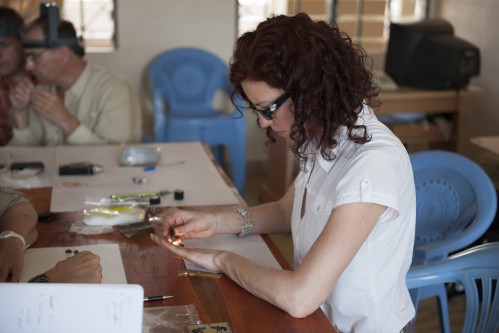
I’m learning quickly in the gem dealer’s office. Photo courtesy of Ernest Rodriguez Photography.
|
Looking at rough gemstones, even if you’re a Graduate Gemologist, or the equivalent from GIA or AGS, is not like looking at cut gems at all. With rough, the true beauty of the gem is hidden beneath an exterior of imperfect angles, crystal faces and granular matrix. A light, shown strategically through the mysterious interior, can show an expert what they are looking for, both in terms of color, and its internal inclusions, which are imperfections within the gemstone.
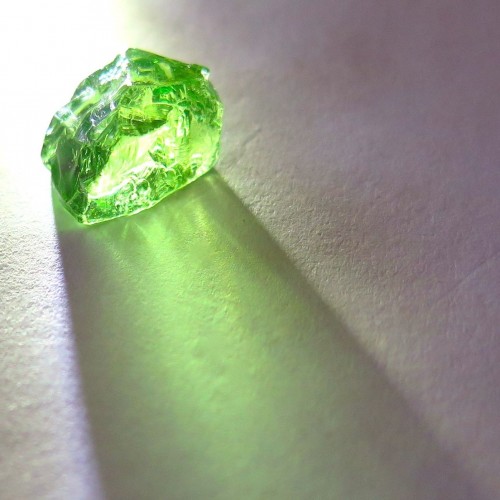
Tsavorite garnet rough gemstone reveals its beauty.
|
There are a lot of factors to look for when buying rough. First, there is your initial sense of the color. Because the exterior of an uncut gemstone can often be hazy and nearly opaque, a micro light beamed into the stone from a forty-five degree angle can show an expert the color possibility. You also have to consider what sort of internal crystals, feathers, and growth shifts the cutter might have to work around.
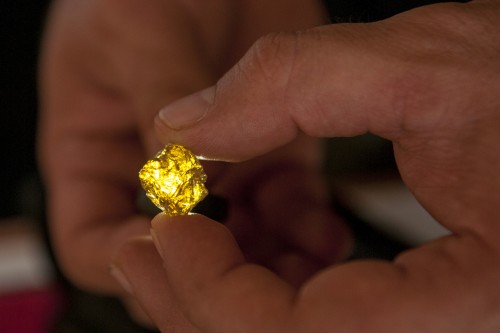
A rough gemstone in the gem dealer’s office. Photo courtesy of Ernest Rodgriguez Photography.
|
Then the stone is weighed in grams, and the per gram price calculated. You have to assess that the gem will lose a significant percentage of its original size in the finished faceted carat weight. Roger, with his exacting eye and perfectionist manner, looks at around a 27% yield of a cut stone, meaning he will cut away up to 73% percent (or more) of the rough gemstone to unlock the beauty within. Other cutters may yield 40% or more, but there will likely be a sacrifice of beauty. For Roger, this uncompromising approach to his craft is a big part of his story, and he is passionate about cutting the best possible gem from the rough, even though that means there is potential profit being left on his cutter’s wheel as gem dust.
Advertisement

Roger Dery in action. Photo courtesy of Ernest Rodriguez Photography.
|
I found looking at uncut gemstones to be exciting. Seriously, my heart was pounding in my ears. At first it’s overwhelming: it reinforces what you DON’T know. They all start out looking sort of like pretty pebbles, something a child might find and pocket. It requires an expert’s eye to see what this can become through faceting. Otherwise, it is just an appealing rock; a specimen versus a gem.
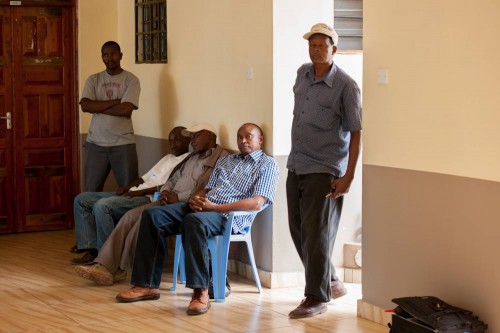
The queue outside the gem dealer’s office. Photo courtesy of Ernest Rodriguez Photography.
|
Outside the office, a few representatives from various local mines were waiting with their goods. They were carrying—today–sapphires, garnets, rubies, and tanzanites. There are rarely any notes on the plastic poly bags that hold the stones. Sometimes the stones are dusty, the bags worn and falling apart. Notably, one of today’s first parcels was wrapped in toilet paper (thankfully unused). So the buyer is working from scratch: much of the time, there isn’t even a notation of what the enclosed gem is. It also takes an expert’s eye to know what the final color of the cut gem might be. The color can lighten or deepen, depending on the type of stone, the depth it is cut to, or the particular faceting treatment. In the right hands, it could even reveal a rare phenomenon such as star asterism.
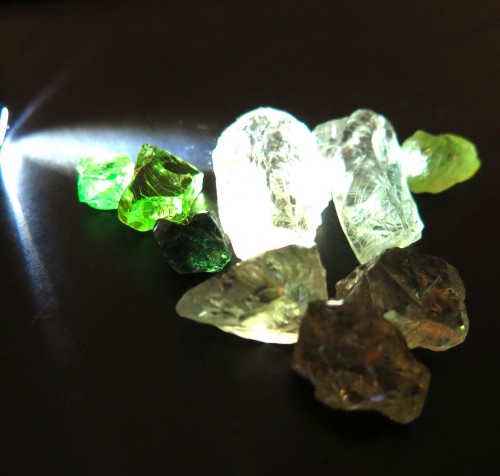
My uncut gemstones against a dark field.
|
By the end of the day, and with slightly sweaty palms, I purchased ten rough gemstones. I’ve never had such a rush as I had from buying directly from the source—the hard-working people who actually pulled these gems from the dirt. It meant so much to know the origin, to look these proud people in the eye and know where it came from. Grossular green garnets, a greenish-blue sapphire, Okenoite, and a particularly yummy Tsavorite garnet make up my small collection.
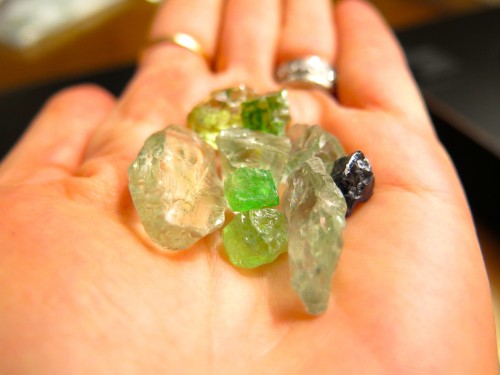
My rough gemstones, a pile of treasures in the palm of my hand…
|
There are a number of compelling reasons to buy directly from the gem miners or dealers in East Africa. One reason is certainly value: you literally can’t buy closer to the source. But there are significant implications beyond that. The supply chain becomes transparent. You put the funds directly in the hands that need it most. Roger, coming to Africa over past 20 years, tries to always leave the people, the land, the trade there, a little better than he found it.
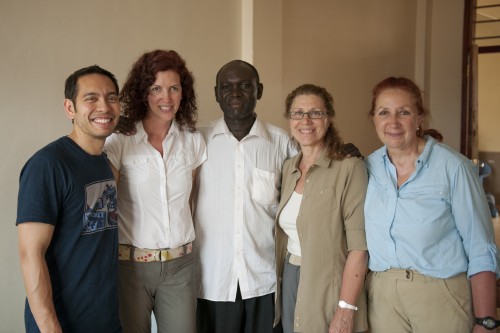
The happy gem hunters of Sharing the Rough! Photo courtesy of Ernest Rodriguez Photography.
|
I have given the stones over to Roger to see what they will become through his expert cutting. I know they are in good hands. These stones represent more than a souvenir or an addition to my jewelry collection. They are a piece of Sharing the Rough, part of a human and geologic ecosystem here that finds the stones against all odds and then turns them into wearable art.
Sharing the Rough is an important jewelry documentary that chronicles the journey of a gemstone from the mine in East Africa to a piece of finished jewelry-as-art. You can find out more at their website www.sharingtherough.com, and in the spirit of sharing, make a donation to the film that will also benefit the people of Tanzania and Kenya here.